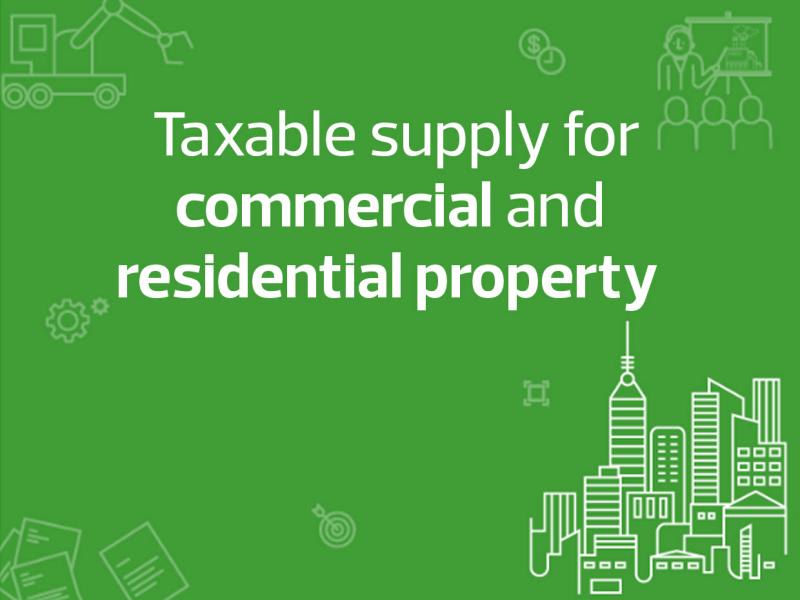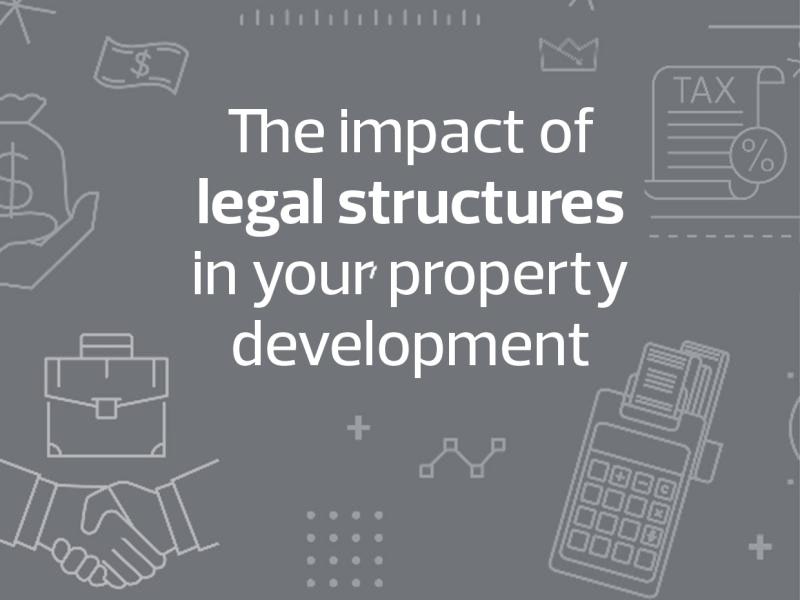How to structure your real estate property development
As a property developer, the structure of your real estate development can make or break your project's success. From planning and financing to construction and marketing, every step in the process needs to be strategically organised for optimal results.
Whether you're a seasoned developer or a newcomer to the industry seeking guidance, there are structural challenges that can impact the profitability of your property venture. It is essential to build your projects on a strong foundation, typically with the assistance of a seasoned adviser.
This article is for anyone looking to structure their real estate development and understand the different outcomes and scenarios that may arise.
Property developers usually have one of three goals in mind when they plan a property development project.
Those goals are:
- Develop, and sell all
- Develop, sell some, and retain the rest
- Develop, and retain all.
If this intention is clear before starting the property development project, the legal structure and funding arrangements can be prepared in advance to optimise the success of the venture.
However, when a property developer changes their intentions for the property partway through the development process it adds complexity.![]()
Changes in intention during property development
Complexity arises when a property developer has a change in intention partly through the property development. Whilst this may arise as a result of personal preference, it is typically a response to changes in market conditions (both positive and negative), changes in council policy, zoning or FSR, business performance, or demands from third parties (creditors, banks) or investors.
When a change like this happens, the risk level can increase. While many property developers understand the immediate economic factors well, those who do not seek expert advice often encounter unexpected challenges related to income tax, tax planning, GST, or stamp duty.
The changes in intention typically manifest in two different scenarios:
Buying property to develop and sell
When property initially acquired with the intention to "develop and sell" undergoes changes in market conditions such as a decrease in sale price, purchaser defaults on completion, or an increase in rental yield, it often prompts a shift in strategy towards "develop and retain."
This transformation signifies a pivot towards viewing the property as a long-term investment rather than a short-term profit opportunity. This strategic adjustment allows investors to capitalize on evolving market dynamics and adapt their approach to maximize returns over an extended period. By recognising and responding to these shifts in intentions, investors can position themselves strategically in the real estate market and optimize their investment portfolios for sustained growth and profitability.
Develop property and retain real estate as a long-term property investment
Developing property with a long-term perspective requires strategic planning and patience. Retaining the property as part of a high-growth portfolio can be a lucrative long-term investment strategy. By holding onto the property and benefiting from its capital growth over time, investors can create significant wealth.
However, if a property was acquired with the intention to 'develop and retain', but market conditions change, such as an increase in sales price or a decrease in rental yield, or if there are changes in zoning or an increase in FSR, or if creditors, banks, or investors apply pressure, then the intention may change to 'develop and sell'. It is essential to consider long-term goals and market conditions when embarking on a property development project.
Tax Considerations in Property Development
Under each of these scenarios some of the following more common income tax, GST and stamp duty considerations may come into play.
When market conditions change the purpose of held property, so should the account it is held in.
Property that was acquired with an intention to develop and sell will typically be held on ‘revenue account’, meaning that any profit or loss on disposal may give rise to ordinary business income, or an allowable deduction. Alternatively, property that was acquired with an intention to develop and retain will typically be held on ‘capital account’, meaning that any gain or loss on disposal may give rise to a capital gain or capital loss.
Where the intention for the property subsequently changes, it is often the case that the character of the property from an income tax standpoint also changes. That is, property that was held on revenue account may now be held on capital account, or vice versa.
Distinguishing between gains and losses on revenue account or capital account is important. Whilst revenue gains are taxed as ordinary business income, capital gains may be eligible for capital gains tax (CGT) concessions or discounts (such as the 50% CGT discount available to individuals and trusts).
Similarly, whilst losses on revenue account can typically be applied against all forms of revenue gains and capital gains, capital losses can only be applied against capital gains. That is, capital losses cannot be applied to reduce revenue gains.
Common tax issues when changing intent of property development
Gains that were going to be made on capital account may now be made on revenue account, with the result being that capital gains tax concessions or discounts are no longer available (or only available in part).
Gains that will now be made on capital account may be made by an entity that is not eligible for a CGT discount (e.g. a company).
Losses that now arise on capital account may be of no use if future gains are likely to be made on revenue account.
To address the above, options may be available to developers to restructure the ownership of property at the time that a change of intention occurs to ensure that tax-preferred outcomes can be achieved in the future. As always, specialist advice should be sought prior to undertaking any restructure.
GST and residential property
Where new residential property has been developed for resale, GST can typically be claimed on the costs incurred to undertake the development (known as credible acquisitions). Should the developer subsequently decide to retain the residential property and apply it to derive residential rent (being an input taxed supply), a ‘change in creditable purpose’ may arise, with the unfortunate consequence that some of the GST previously claimed in relation to the development of the property is required to be repaid to the ATO.
If the new residential property is retained and solely used for the purpose of deriving residential rent for a continuous period of five years, it is likely that the entire amount of GST claimed in relation to the development will be required to be repaid to the ATO.
Clawbacks of exemptions for foreign person of surcharge purchaser duty and land tax
As many developers would be aware, a ‘foreign person’ (including a company or trust) that acquires residential property (including vacant land that is zoned or otherwise designated to be used for residential purposes) in NSW may be required to pay an additional 8% surcharge purchaser duty in addition to the standard transfer duty that applies. Similarly, foreign persons that hold residential land in NSW may also be subject to an additional 2% surcharge land tax.
In 2017, amendments were made to provide ‘Australian-based developers’ who are ‘foreign persons’ with an exemption from both surcharge purchaser duty and surcharge land tax in Australia. To be eligible for the exemption, the Chief Commissioner must be satisfied that the land will be used for the purpose of ‘construction and sale of new homes’, or the ‘subdivision and sale for new home construction.’
As with all exemptions, the devil is in the detail. To satisfy the requirements under the ‘construction and sale of new homes’, the new home must not be used and occupied for any purpose (other than a display home) before the completion of the sale.
Putting this in context, should an Australian-based developer who is a foreign person initially receive an exemption from surcharge purchaser duty in respect of a property purchase subsequently decide to retain the newly developed home and use it to derive residential rent, it appears that the above requirement will not be met, as the new home will be used and occupied for the purpose of deriving residential rent. As such, the exemption may be revoked resulting in the developer subsequently being hit with both surcharge purchaser duty and surcharge land tax.
Need help with structuring a property development project?
If you have any questions about the content contained in this article, please get in touch with your local RSM property and construction expert or contact Adam Crowley directly.







